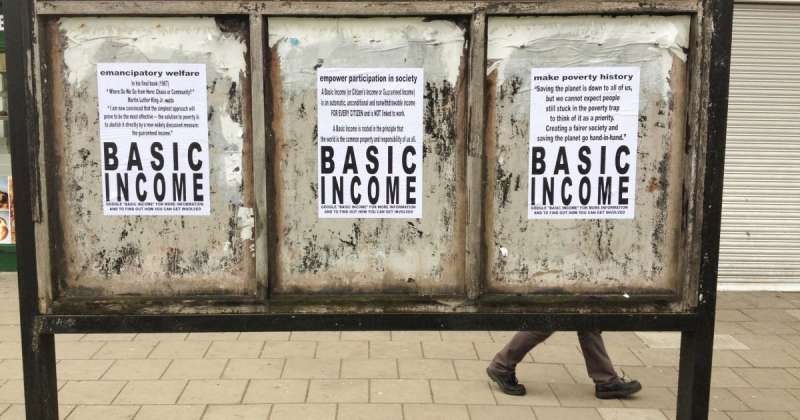Is a basic income the solution to persistent inequalities faced by women?

March 8 is , and despite a range of laws and policy measures, many gender inequalities seem firmly entrenched. Given the persistence of such discrimination, what can be done? One innovative policy measure that came to the fore in the 2017 French presidential election is the . A recent confirmed the continuing interest, as do and new local-level experiments in , and elsewhere in the world.
Yet is this the policy solution for women and persistent gender inequalities?
Women already at risk
There are a number of reasons why a basic income might seem like a good idea for women. They're already disproportionately represented among those in . It has also been found that the link between current welfare systems and paid work : women are more likely to take time out of the workforce to care for others, they have lower access to income transfers, they tend to be paid less for the same work and they continue to face barriers to access high-paid occupations.
A position of financial weakness can also lead to other disadvantages, including the risk of domestic violence that results from . Given that a basic income would break the link between earnings and welfare payments and would be paid to individuals rather than households, it could provide some women with more financial stability, predictability and independence.
A top-up for underpaid women?
A basic income also has the that . With a modest and reliable income, workers would not be pushed into the first job that comes along. They could seek a better match with their skills and experiences as well as higher wages and improved conditions.
Many sectors where women dominate the workforce are low-paid. Indeed there is an implicit expectation that workers in do what they do because the job is important, not for the money. So there is a risk that a basic income might be used to subsidise for women without addressing the undervaluation of female-dominated occupations in care and services.
Hidden risks
The unequal division of labour in the home is perhaps the of much gendered inequality. An unconditional basic income means there is no requirement that the recipient perform any care work, meaning that men who do very little at home would . On the one hand, those who work more, relying on others to do the care work, would effectively contribute to carers receiving basic income via their taxes. As , _everyone _relies on the unpaid care work disproportionately performed by women – basic income might thus be a way to address the freeriding of those who fail to do their fair share.
On the other hand, a basic income might serve to entrench the gendered division of unpaid labour, encouraging those with home-care responsibilities to further withdraw from the labour market. This concern is not limited to basic income: in Sweden, a subsidy to support parents caring for their own child at home faced strong opposition as a . A decision for the lowest-paid workers – often woman – to withdraw might seem rational at the household level and in the short term. However, this apparently autonomous choice then combines with pay inequality, gendered disadvantages and cultural biases, leading to problematic outcomes for the woman in the medium to long term and at the .
The value unpaid work for society
A basic income could be regarded as one that by recognising the non-market nature of the activity and its interaction with cultural and ideological influences. Indeed even sceptics recognise that such a payment would be more transparent than disguised subsidies for carers in receipt of unemployment benefits as a source of income. A basic income could also be a way to free up the in the home for a more equal society. However, those same cultural and ideological influences are also a "force" that leads to women – even the well-paid ones in full-time work – doing more of the unpaid work in the home.
Proponents of gender equality argue that real change requires a rebalancing of the distribution of labour both inside and outside the home, but so far progress on the latter has outstripped the former. This leaves women with a "double shift". So a basic income, even for proponents, should perhaps only understood as of a wider package of policies aimed at reducing inequalities whether by age, class, education or gender.
Part of the solution or a risk?
Ultimately, a basic income might be an effective way to treat some of the symptoms of wage inequality and unequal access to the labour market. However, it does not deal with the underlying causes. Indeed, a are required to break persistent gender inequalities.
Some of these policies need to target men and their behaviour in paid and unpaid work. Such policies might be aimed at shifting the culture of society toward one where all workers – men and women – can be caregivers, and incentivise role-sharing within households through equal access to leave. On its own, a basic income is unlikely to encourage a fairer distribution of care work and may indeed render the current unequal role sharing economically viable with unintended consequences for equality goals.
Provided by The Conversation
This article was originally published on . Read the .![]()

















